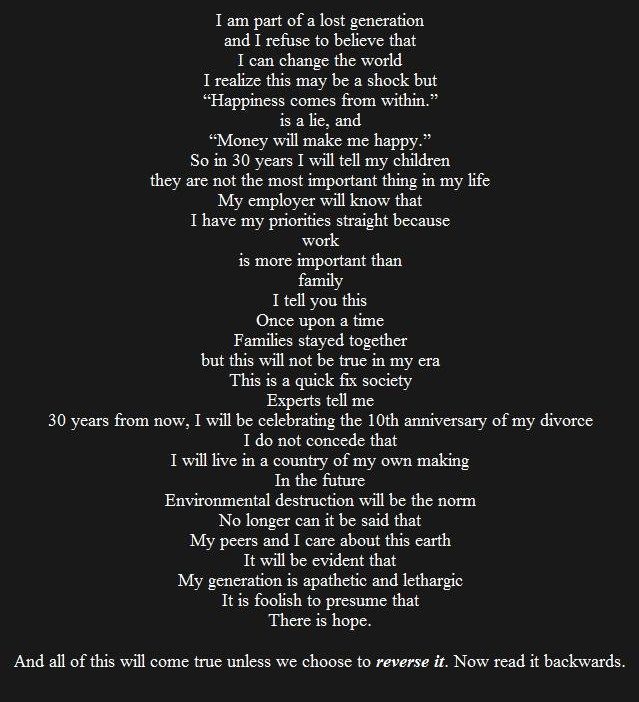

Golden Shovel Poetry
| Source Poem | Golden Shovel Poem |
|
Dusk, by Angelina Weld Grimke Twin stars through my purpling pane, The shriveling husk Of a yellowing moon on the wane,-- And the dusk. |
Vanish, by Nikki Grimes I could vanish, were it not for the twin street lights outside my window, imitating stars. Without their brightness, you'd peer through half-open blinds and find barely an outline of my blue-black body, skin purpling toward midnight, my image invisible as a glass pane. |
How to Write a Golden Shovel Poem
Step 1: Choose a line from a poem. This will be your "striking line." Try to find a line with some strong, interesting words.
Step 2: Next, write the words from your striking line vertically down the right margin of your page.
Step 3: Now write the rest of the poem! Each line will end with a word from you striking line. See where your imagination/creativity takes you. It’s up to you whether to take inspiration from the topic or theme of the poem you borrow from.
For examples and more information, click HERE.
Reverse Poetry

By Jonathan Reed
How To Write a Reverse Poetry
Reverse poetry (sometimes called Reverso poems or Reversible poems) can be read two ways: forwards (top to bottom) and backwards (bottom to top). Usually, reverse poems are about topics that have two opposite viewpoints. When writing a verse poem, it works well to make dramatic claims or statements and alternate them with lines such as "I believe that" or "Most people think." Writing a reverse poem can feel like solving a puzzle. It's difficult, but fun and rewarding.
Book Spine Poetry

How to Create a Book Spine Poem
Step 1: Browse many, many book spines and choose one or two that spark your interest.
Step 2: Find other book spines that complement your first choice. Don’t edit yet – grab any spines that you think may work! Gather at least 6-8 additional books.
Step 3: Start playing with combinations of spines, swapping the order. Try putting your poem together like a puzzle and explore how changing the order changes the meaning of your poem.
Step 4: Don’t be afraid to use the library catalog to look up titles with specific words or phrases that suit your needs.
Step 5: Snap a photo of your poem! If you're sharing on social media, feel free to use the hashtag #CVPoetryMonth22, and/or tag @CVSDLibraries on facebook, instagram, or twitter.
Blackout Poetry
Image from www.tinyurl.com/askdclibraries
How to Create a Blackout Poem
Like book spine poems, blackout poetry is a form of a found poetry--poetry that uses existing text and remixes it. To make a blackout poem, follow these steps.
1. Find a page of text that interests you. It can be a newspaper page, book page, or anything else with a lot of text.
2. Skim the page for words or a theme that interests you.
3. With a pencil, lightly circle words or phrases that you might want to use. On a separate sheet of paper, write them down in order and read through the result.
4. Play around with what you've got! Cross out anything that doesn't fit well. If you need a few connecting words (like "a", "the", "it", etc.), go back to the text and see if you can find something useful between the words you want to connect.
5. Go back to the text page and box out the words you want to keep in a dark crayon, pen, or sharpie. Erase any remaining pencil marks.
6. Read through your final poem. If you want to be fancy, you can sketch in a few images or symbols that relate to your poem. Then, using a dark crayon, pen, pen, sharpie, pencil, or even paint, black out everything that is NOT a word in your poem or one of your own sketches. You're done! Display or snap a photo.